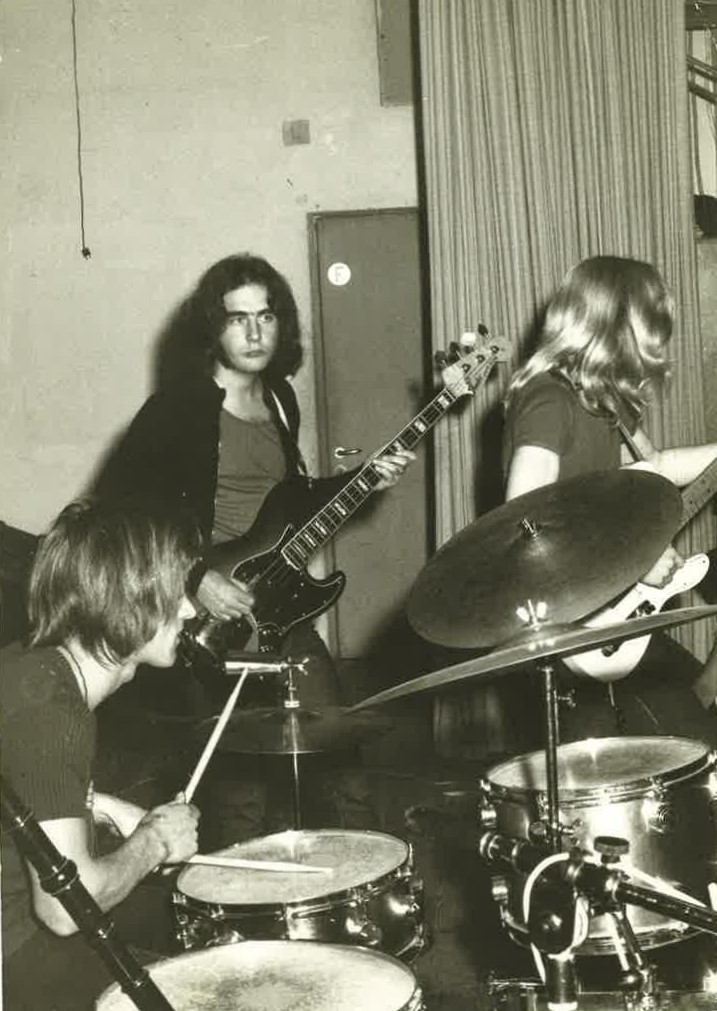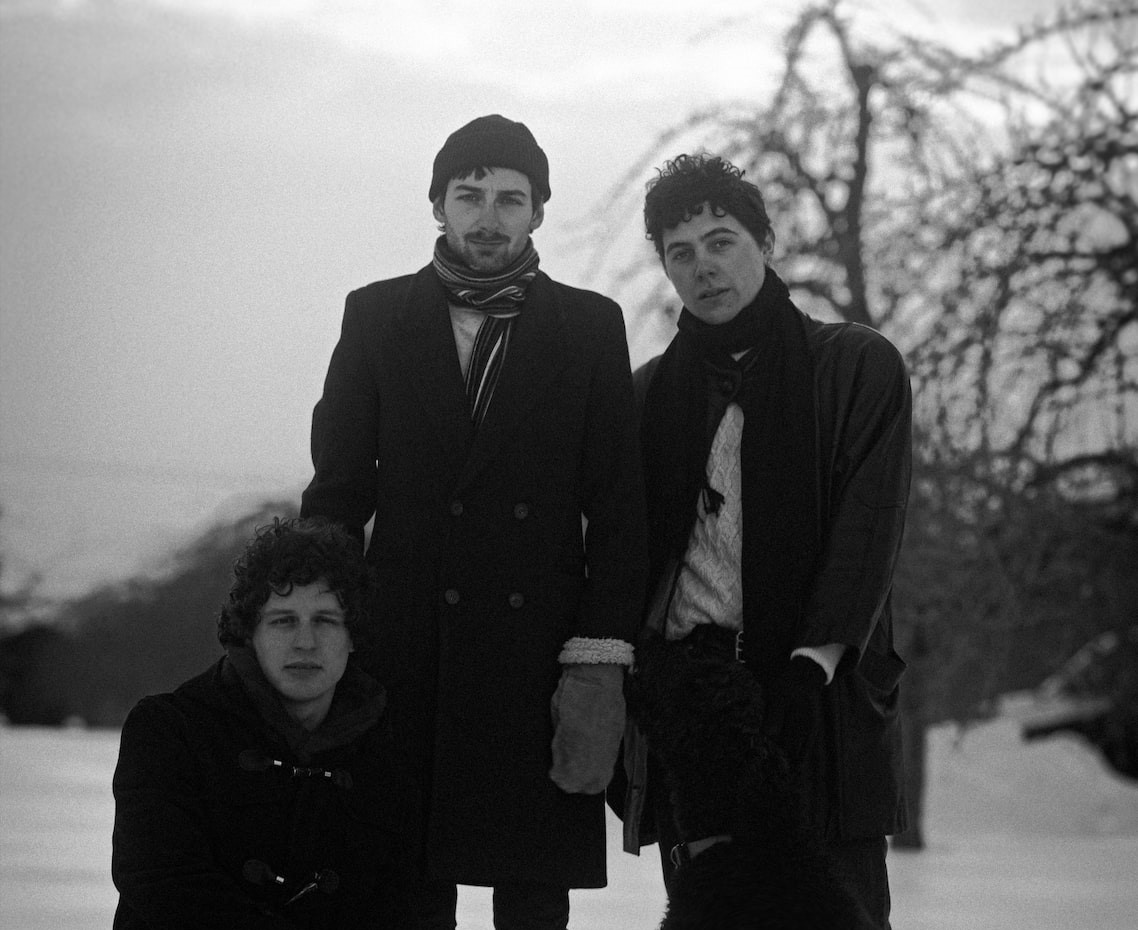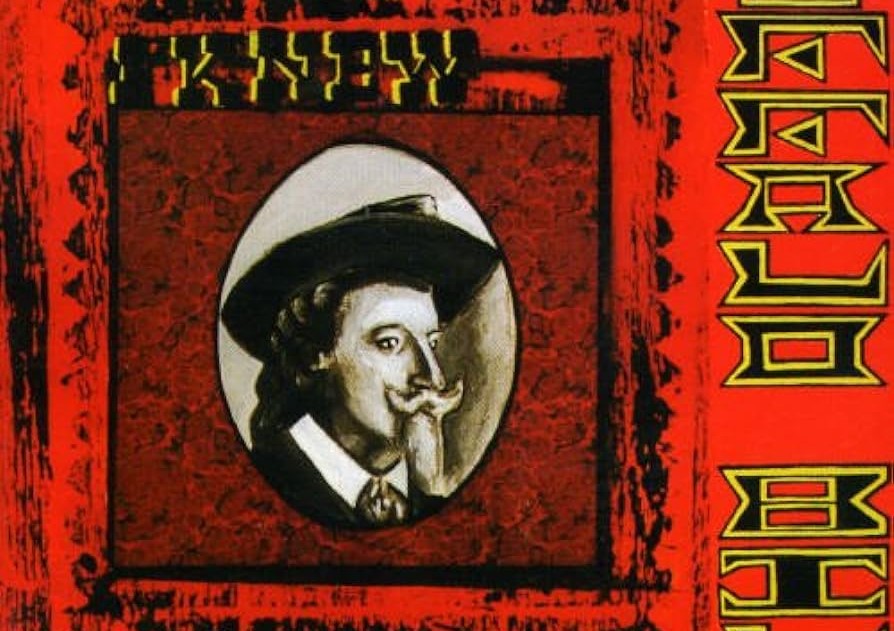Howard Chaykin’s Divided States of Hysteria
The iconic cover to Star Wars no. 1 – by Howard Chaykin, 1977
Legendary Comic Book Creator On His Controversial New Series, Politics, Love of Jazz, and the Industry Giants Who Influenced Him
Howard Chaykin is an iconic American comic book writer and artist, perhaps best known as the first artist to draw a comic book adaptation of Star Wars, upon George Lucas licensing it to Marvel Comics in 1977, before the actual film was released.
The Star Wars comic helped save Marvel Comics at a time when superhero-based comic book sales were falling.
Having apprenticed under comics industry luminaries Neal Adams, Gil Kane, Wally Wood and Gray Morrow during the early 1970s, Chaykin went on to do work primarily in the science fiction, fantasy, and pulp fiction genres for both Marvel Comics and DC Comics, creating such characters as Ironwolf, The Scorpion, and Dominic Fortune, and working on licensed characters such as Red Sonja, and The Micronauts; as well as his own independently owned (or co-owned) characters Cody Starbuck, and Gideon Faust–warlock at large (co-created with the late, great Len Wein–who created the characters Swamp Thing for DC comics, and Wolverine for Marvel Comics).
An early ‘70s page featuring Chaykin’s swashbuckling Ironwolf–a character created for DC Comics — with a very psychedelic art style.
Panels from Chaykin’s 1979 adaptation of Alfred Bester’s The Stars My Destination
Chaykin’s cover for independent comic Star Reach no. 4–featuring Cody Starbuck.
Chaykin’s cover for independent comic Star Reach no. 5–featuring Gideon Faust–warlock at large.
Chaykin illustrations of Red Sonja
Chaykin broke out big during the 1980s with his creator-owned comic, the critically acclaimed American Flagg!, through independent publisher First Comics. American Flagg! was a science fiction political satire set in a dystopian future in the year 2031 when the U.S. has become a corporatocracy controlled by a malevolent organization called the Plex. Ex-TV star Reuben Flagg becomes a deputy Plexus Ranger in Chicago, and, after Flagg’s eyes are opened to the corruption, graft and subllminal messaging the Plex uses to control the population, he decides to buck the system.
Howard Chaykin’s American Flagg! number one.
An interior panel from American Flagg! lamenting the death of the American spirit–killed by the banksters and corporations
As the ‘80s progressed, Chaykin furthered his independent success, becoming recognized as one of the top tier comics creators–along with Frank Miller and Alan Moore– with his edgy and highly controversial Black Kiss limited series comic–a hardboiled erotic thriller set in Los Angeles in the 1980s. He followed that up with a series of graphic novels called Time²–which combined Chaykin’s love of jazz, film noir and fantasy elements in a quasi-autobiographical imaginary version of New York City.
The cover of an edition of Chaykin’s semi-autobiographical graphical novel Time²
Chaykin has also contributed to Heavy Metal Magazine and helmed successful reboots for DC Comics of pulp fiction anti-hero The Shadow, and also WWII-era flying ace Blackhawk–rumored to be in line for an upcoming DC Cinematic Universe film.
A classic Chaykin cover for DC Comics’ WW II-era fighter pilot Blackhawk
Beyond producing over 40 years of comics, Chaykin has been a successful commercial artist and also a series writer for TV shows, including the first The Flash series (1990-91), Earth: Final Conflict (1992-2000), and Mutant X (2001-2002).
Now, Howard Chaykin brings his latest dark-humored, sociopolitical comic book endeavor to the public, The Divided States of Hysteria, through independent publisher, Image Comics. The premise for the limited series comic is that a dirty bomb is exploded which devastates New York City– the aftermath triggers a second American Civil War, during the chaos of which, five private contractors with sordid pasts are assembled together and tasked with hunting down the bombers and delivering justice.
The press release for the comic states:
“An America sundered. An America enraged. An America terrified. An America shattered by greed and racism, violence and fear, nihilism and tragedy……and that’s when everything really goes to hell.”
An interior page from The Divided States of Hysteria‘s first issue.
I caught up with Howard Chaykin while he was doing a signing for the debut issue of The Divided States of Hysteria at Hypno Comics and Games in Ventura.
On how the concept and plot for The Divided States of Hysteria came about, Chaykin explained:
I first came up with the material in January of ‘16, I pitched it in March of ‘16. At the time I believed that it was going to be a Hillary Clinton squeaker and that there would be violence in the streets from the other side–and it now feels like a much more optimistic project than the real world is. At its heart, it’s about the aftermath of a one-two punch.
It’s the slaughter and assassination of a President and his entire cabinet, leaving the country in the hands of a lower level government employee who is clearly not up to the job; and the aftermath of the next successful terrorist attack in the United States. The hero is the guy who misidentifies the target–he gets everybody killed, including his wife, his two kids, and his girlfriend.
I’m one of those guys who has no interest whatsoever in the wounded hero model. My heroes tend to have feet of clay. Frank Villa, the protagonist of Divided States of Hysteria, is a complex guy who’s got a multiple life… and he becomes the most hated man in America. He’s a serious player in the Central Intelligence Agency who finds himself without a job and on the run…and [eventually] works for a company that runs private prisons and mercenaries.
He creates a franchise mission financed by this private corporation to find and murder the people responsible–and inadvertently discovers that there’s another planned attempt, because as it turns out, he did not misidentify the target, rather, at the last moment, the engine of the terrorist attack made an executive decision.
On the topic of characterization in his writing and moral ambiguity, Chaykin stated:
My heroes and my villains are frequently virtually interchangeable because I earnestly believe that people who behave in ways that we regard as counterintuitive believe in their heart-of-hearts that they are the heroes in their movie–and that they are doing everything they can for their constituency.
People who call Hitler crazy are undercutting the issue. Hitler was not crazy–he was a politician with some seriously extreme ideas. But, had he won, his version of history would be the norm. The alt-right confirms that. I like the idea of moral ambiguity in both my heroes and my villains.
On whether it is revealed in the narrative early on exactly who the terrorist antagonists are, and the length of the series Chaykin stated:
It isn’t revealed in the first part, but it becomes fairly clear soon enough in issue two. The first arc is six issues–the second arc, which is subtitled ‘They Always Knew’ is inspired by that series of articles that popped up in The New Yorker a few months back about these billionaire bunkers–these guys buying missile silos in the Midwest.
Apparently, a lot of dotcom billionaires and other financial hedge fund stalwarts are buying condominiums in what are converted missile bunkers, from the ballistic missile system in the Midwest, which have been turned into shelters against the coming apocalypse, an apocalypse, which, of course, these guys paid for.
The cover for The Divided States of Hysteria no. 2
With regard to whether the U.S. President in The Divided States of Hysteria’s narrative is based on either our current President or any former Presidents, his political perspective and his take on what’s currently going on in American society Chaykin said:
No–it’s not. I actively did not want to do a fictional version of an actual standing-vote elected-for-President. I actively did not want to do Hillary or Trump–it never says explicitly who the President who was murdered was–but it takes place in a recognizable world. If you read the editorial [in the first issue] it lays out the groundwork of where it came from and why. The book is also about Social Justice Warriordom and the Balkanization of the American left.
I’m second generation–my parents were born here…I deeply embraced the idea of being an American. I was a member of the anti-war movement until I saw one of my colleagues burn an American flag, when I realized that I was surrounded by narcissists willing to give away the entire concept of patriotism to the opposite side in the name of sensation–and that’s informed my feelings about the left since that time. I remain politically left, but I also recognize that the left and the right share a solipsism about self-belief that has no room for human skill and understanding. I come from a secular Jewish family–I’ve often said facetiously that the only god we took seriously was Franklin Delano Roosevelt. My mother was a popular fronter, my uncle was a union organizer…but I’ve come to believe that all that affection for the New Deal was misjudged because I don’t believe it could have become what it was if not for the anti-immigration laws of the 1920s. At its core, the New Deal was welfare for white people.
Images from The Great Depression
The Great Depression, 1937 photo by Margaret Bourke-White
“Migrant Mother.” 1936 Great Depression photo by Dorothea Lang
It doesn’t take a genius to recognize the fact that everything we’ve been saying about the Tea Party is true–it has nothing to do with taxes and everything to do with ethno-nationalism. This country has always been based on ethno-nationalism–what you are seeing right now is the eruption of mortal terror at the idea of this country being ‘brown.’ And I’m no longer ‘white.’
I’m a Jewish guy, but according to the tenants of this current administration and the people that support it, I’m not ‘white’. I’m okay with that–I mean, I’m not gonna use it in a hyphenate way, because I loathe identity politics.
I think that a contributing factor to the loss of the election was a desperate attempt to be identified in one special category or another. I never thought I’d live long enough to live in an apocalyptic science fiction novel I wouldn’t read. So, there you go.
Comics Auteur Howard Chaykin
Speaking on his artistic influences, comics syntax and feelings about the industry today, Chaykin related:
I’m one of the architects of the modern comic book–but my concepts, my vocabulary, my syntactical approach to comic books has been perverted, warped and misused by the guys who did comics in the ‘90s, demonstrating the fact that they may have had good accents but they had no vocabulary.
I recognize that I’m a singular talent in that regard. I’m as good as I am because I had to work to be as good as I am. I am not naturally talented. I became a writer because most of the guys I was working with, loved working with me because I did 90% of their work for them.
For example, on the Star Wars stuff, I broke the script down into the six issues. Most enthusiasts [comics readers] don’t understand how much of the writing of comics is done by the artists. Comic book artists are not illustrators –rather, they are graphic designers in the service of narrative.
Howard Chaykin’s original character concept sketches of Luke, Leia, and Han circa 1976, created for Marvel Comics’ Star Wars adaptation.
In the best sense, that means they’re producing pictures with narrative value. Many comic book artists aren’t capable of doing this. This is true certainly in the case of quite a few guys younger than me. Their work doesn’t demonstrate decisions about the size and shape and placement of the panels. They don’t understand the concept of narrative value. I stand on the shoulders of giants. I hear Gil Kane’s voice in my work every day–I miss him terribly. Woody [Wally Wood] was one of my heroes. To this day, my work is defined by doing something graphically like Alex Toth and texturally like Wallace Wood. I look at Woody’s stuff almost everyday. Those two guys [Kane and Wood] and Gray Morrow and Neal Adams–they taught me everything I know.
One of Howard Chaykin’s artist mentor’s the legendary Wallace Wood, who rose to fame in the comics industry in the 1950s at EC Comics–working on science fiction, horror, and shock suspense comics as well as Mad magazine.
On how jazz music–particularly Swing, Bebop and Cool jazz– has impacted his life and work, Chaykin explained:
I didn’t have ears until I started drawing Time²–so I started investigating, buying books and researching the material and actually learning what I was talking about, and reading Barry Ulanov, and Leonard Feather, and Whitney Balliett, and Gunther Schuller–guys who were academics writing about the material. Gary Giddins biography of Bing Crosby is shockingly good. And it lead me in directions to start listening closer and with more analysis. Western Swing. The Count Basie Orchestra–the Columbia stuff, the Decca material. the Roulette Records of Morris Levy. A lot of Bird [Charlie Parker], early Miles [Davis], Howard McGhee. I like the more mathematical players–I like Warne Marsh, Lee Konitz. I like Lester Young. Wes Montgomery is melodic. I find Ornette Coleman too out there. I love Chet Baker as a singer. Originally, I was a doo-wop fan–all the rock ‘n’ roll I listened to came from doo-wop. Leroy Griffin and The Nutmegs, the original Drifters, The Penguins, The Ink Spots, and The Mills Brothers. I still listen to Bing Crosby recordings every week. Bing was the first guy to do a pre-recorded radio show. He was the one who financed the reel-to-reel tape recording business–you can draw a line from that to DVDs.
Bing Crosby
On the notion of the ‘Golden Age’ of speculative fiction reading from his childhood and his personal Citizen Kane-esque ‘rose bud,’ Chaykin related:
I bought this book on October 25th, 1963 called A Fighting Man of Mars. I was aware of Tarzan through Johnny Weissmuller. I had never read Burroughs but had this odd awareness that Tarzan and John Carter of Mars novels existed, in the same way I knew Dumas wrote The Three Musketeers before I was born.
1963 Ace paperback edition of A Fighting Man of Mars, cover art by Roy Krenkel
I sit down on my stoop. It’s a warmish October in Brooklyn–and I read this book. It’s a transformative experience. Saul on the road to Damascus. I have enormous love for that work–in retrospect, it’s unreadable, but it is who I am. So much of what we love and read, is when we are available to love and read it.
Howard Chaykin’s New York City pin-up
– Sean Mageean
© Copyright http://www.psychedelicbabymag.com/2018



























